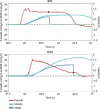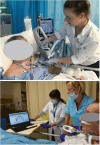Respiratory Muscle Rehabilitation in Patients with Prolonged Mechanical Ventilation: A Targeted Approach
- PMID: 32204719
- PMCID: PMC7092518
- DOI: 10.1186/s13054-020-2783-0
Respiratory Muscle Rehabilitation in Patients with Prolonged Mechanical Ventilation: A Targeted Approach
Erratum in
-
Correction : Selected articles from the annual update in intensive care and emergency medicine 2020.Crit Care. 2024 Mar 21;28(1):94. doi: 10.1186/s13054-024-04856-9. Crit Care. 2024. PMID: 38515200 Free PMC article. No abstract available.
Abstract
This article is one of ten reviews selected from the Annual Update in Intensive Care and Emergency Medicine 2020. Other selected articles can be found online at https://www.biomedcentral.com/collections/annualupdate2020. Further information about the Annual Update in Intensive Care and Emergency Medicine is available from http://www.springer.com/series/8901.
Conflict of interest statement
The authors declare that they have no competing interests.
Figures





References
-
- Dres M, Dube BP, Mayaux J, Delemazure J, Reuter D, Brochard L, et al. Coexistence and impact of limb muscle and diaphragm weakness at time of liberation from mechanical ventilation in medical intensive care unit patients. Am J Respir Crit Care Med. 2017;195:57–66. doi: 10.1164/rccm.201602-0367OC. - DOI - PubMed
Publication types
MeSH terms
LinkOut - more resources
Full Text Sources
Medical

